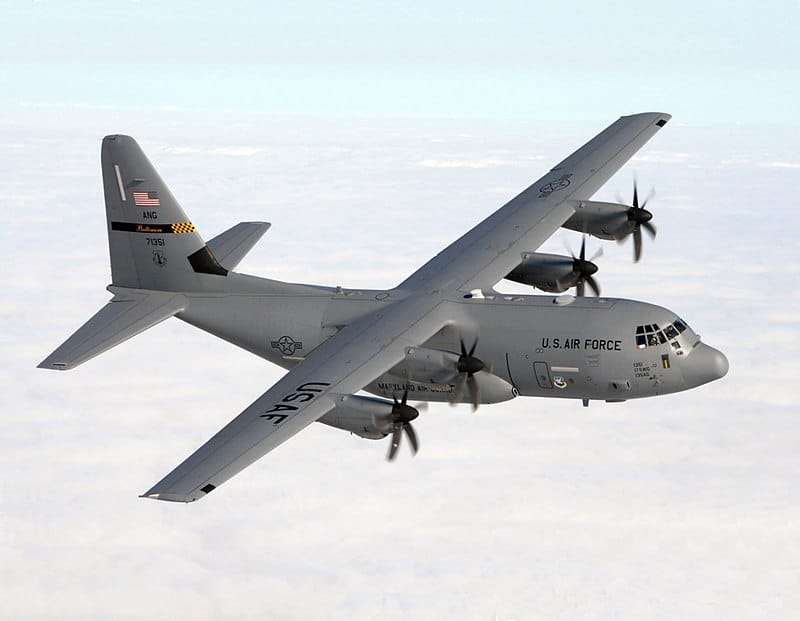Aerospace
Australia to buy 20 new US-made C-130J Hercules Aircraft for $9.8bn

Australia announced on Monday that it would pay the US $6.6 billion ($9.8 billion) for 20 new C-130 Hercules, doubling the size of the Australian Air Force’s fleet of the second-largest heavy transport aircraft.
Australian Air Force secures US approval for C-130J Super Hercules deal(Opens in a new browser tab)
According to the plan, the air force would start acquiring 20 new C130J aircraft starting in 2027 in an effort to replace and increase its current fleet. Currently, the RAAF employs 12 Hercules aircraft, known as the “workhorse” of the air force, for usage both domestically and abroad.
The agreement comes at a time when China has emerged as an increasingly assertive power in the Indo-Pacific. The exercise, which involves more than 30,000 troops and participants from 11 other nations, is the largest Australia-U.S. joint military exercise ever. The biennial Talisman Sabre war games kicked out on Friday and will last for two weeks across Australia.
The aircraft, according to Defence Minister Richard Marles, are a “crucial asset” to the country and the RAAF’s defensive capabilities. The purchase “will almost double the fleet and represents a massive uplift in capability, in mobility, and in transport for the Royal Australian Air Force,” Conroy told reporters.
The crucial factor, according to Conroy, is that almost tripling the fleet increases our ability to deploy them on several operations at once. Eight of the larger Boeing C-17A Globemaster heavy transport jets, operated by the Australian Air Force, are also in service.

Aerospace
Boeing Transfers Rocket Stage to NASA, Paving Way for Human Moon Mission

Boeing has achieved a significant milestone by providing NASA with the second core stage of the Space Launch System (SLS) rocket.
This crucial component, crafted at NASA’s Michoud Assembly Facility (MAF), is set to propel the Artemis II crew into lunar orbit, marking humanity’s return to deep space after a 50-year hiatus.
The monumental Boeing-built rocket stage, the largest element of the Artemis II mission, will embark on a journey aboard the Pegasus barge, traveling 900 miles to NASA’s Kennedy Space Center.
Comparison of two legendary aircraft B777x vs B747 aircraft:Click here
Upon arrival, it will be meticulously integrated with other essential Artemis II components, including the upper stage, solid rocket boosters, and NASA’s Orion spacecraft within the iconic Vehicle Assembly Building. This intricate integration process is a vital step toward the eagerly anticipated Artemis II launch, slated for 2025.
“Boeing-built products helped land humankind on the moon in 1969, and we’re proud to continue that legacy through the Artemis generation,” remarked Dave Dutcher, vice president and program manager for Boeing’s SLS program. “Together, with NASA and our industry partners and suppliers, we are building the world’s most capable rocket and paving the way to deep space through America’s rocket factory in New Orleans.”
NASA, Lockheed Martin Reveal X-59 Quiet Supersonic Aircraft:Click here
The delivery of Core Stage 2 marks a significant achievement in the evolution of the SLS rocket. Towering over 200 feet and powered by four RS-25 engines, this core stage, coupled with two solid-fueled booster rockets, will generate a staggering 8.8 million pounds of thrust. This immense power is crucial to launching Artemis II and future missions into the vast expanse of space.
The SLS rocket stands unparalleled in its capability to transport both crew and substantial cargo to the moon and beyond in a single launch. Its extraordinary capacity will facilitate the delivery of human-rated spacecraft, habitats, and scientific missions to destinations including the moon and Mars, ushering in a new era of space exploration.
-

 Travel1 week ago
Travel1 week agoAir India to Expand US Operations with Three New Routes After a Decade
-

 Travel2 weeks ago
Travel2 weeks agoWhy We Should Avoid These Stamps in a Passport
-

 Airlines1 month ago
Airlines1 month agoInvestigations Reveal Fake Chinese Titanium in Boeing and Airbus Jets
-

 Tech4 weeks ago
Tech4 weeks agoChina’s CATL Plans 1,800-Mile Electric Plane Launch by 2027
-

 Airport3 days ago
Airport3 days agoTop 10 Largest Airports in the World by Size
-

 Aerospace4 weeks ago
Aerospace4 weeks agoChina’s Fighter Jets Turn Wings into Autonomous Drones
-

 Airlines4 days ago
Airlines4 days agoAir India Rolls Out A350s for Delhi-New York JFK and Newark Routes
-

 Defence3 weeks ago
Defence3 weeks agoBoeing Enhances Chinook with New Engines and Block II Upgrades at $96 Million







